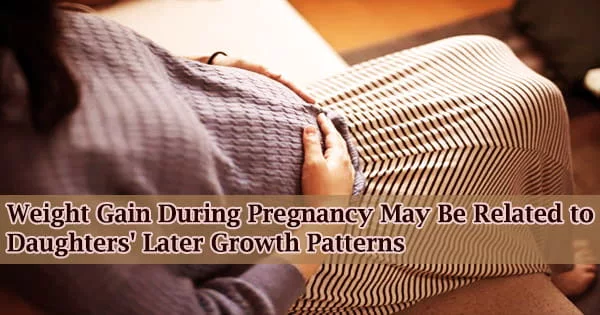According to a new study by researchers at The University of Texas at Austin, rapid weight gain in the first and final months of pregnancy may play a major role in the formation of excess fat tissue in children and adolescents, at least in girls.
Nutritional sciences experts monitored more than 300 pregnant mothers and their children from the age of 5 to 14 years old in a study published today in the journal Obesity. The researchers found a link between patterns of weight gain and loss during pregnancy and changes in their children’s BMI (body mass index), waist circumference, and body fat percentage during childhood and early adolescence.
“We wanted to understand whether different weight change patterns during pregnancy impacted the child’s growth over time or the child’s potential to develop excess fat tissue,” said Beth Widen, assistant professor of nutritional sciences at UT Austin.
“For boys, we didn’t really see that much of a difference in their patterns of weight and body size over time. But for girls, we saw some striking differences. This tells us there are differences between the sexes in this area of child growth.”
In this study, weight gain during pregnancy followed four distinct patterns. In the study, one group of pregnant women lost weight in the first trimester, gained somewhat in the second, and increased substantially in the third.
A second group gained weight slowly over all three trimesters. A third group gained weight slowly throughout the first trimester and moderately throughout the pregnancy.
But, really, we believe there is only a small portion of pregnancy weight gain that can be consciously changed specifically among fat tissue since much of the weight change is necessary to support the pregnancy. It is possible that these findings are just the start of research that can help us further understand risk factors for childhood obesity and may help us develop more individualized weight gain guidelines that support pregnant people.
Beth Widen
The last group gained weight quickly in the first trimester, then gradually gained weight in the second and moderately gained weight in the third.
From ages 5 to 14, females born to the fourth group in this study, those who gained weight more quickly at the start and end of pregnancy, had the highest BMI measures, the largest waist circumferences, and the highest body fat percentages.
Girls born to research participants who dropped weight in the first trimester grew moderately in the second trimester, and fast in the third trimester, on the other hand, had the lowest BMI, waist circumference, and body fat percentages in the study.
Boys in the study showed no clear patterns in pregnancy weight or childhood body composition. This, according to Widen, could be related to variances in growth and development between the sexes, as well as disparities in how boys and girls respond to prenatal exposures.
Finding a pattern in children’s body composition from pregnancy to childhood is not the same as identifying causality, according to the researchers, thus more research is needed. Widen feels that weight changes throughout pregnancy and their relationship to weight changes in babies and children is an area ripe for greater research.
“This study shows us that there may be sex differences in child body composition based on what they are exposed to in utero,” Widen said.
“But, really, we believe there is only a small portion of pregnancy weight gain that can be consciously changed specifically among fat tissue since much of the weight change is necessary to support the pregnancy. It is possible that these findings are just the start of research that can help us further understand risk factors for childhood obesity and may help us develop more individualized weight gain guidelines that support pregnant people.”
The University of Florida’s Natalie Burns, Michael Daniels, and Grant Backlund; UT Austin’s Rachel Rickman, Saralyn F. Foster, Amy R. Nichols, and Radek Bukowski; and Columbia University’s Lori A. Hoepner, Eliza W. Kinsey, Judyth Ramirez-Carvey, Abeer Hassoun, Frederica P. Perera, and Andrew G. Rundle contributed to this study.
This research was funded by grants from the Eunice Kennedy Shriver National Institute of Child Health & Human Development, the National Institute of Environmental Health Sciences (NIEHS) and the U.S. Environmental Protection Agency (EPA) Children’s Environmental Health and Disease Prevention Research Centers, Irving General Clinical Research Center, Educational Foundation of America, John and Wendy Neu Family Foundation, New York Community Trust, the Trustees of the Blanchette Hooker Rockefeller Fund and the National Institutes of Health.
















